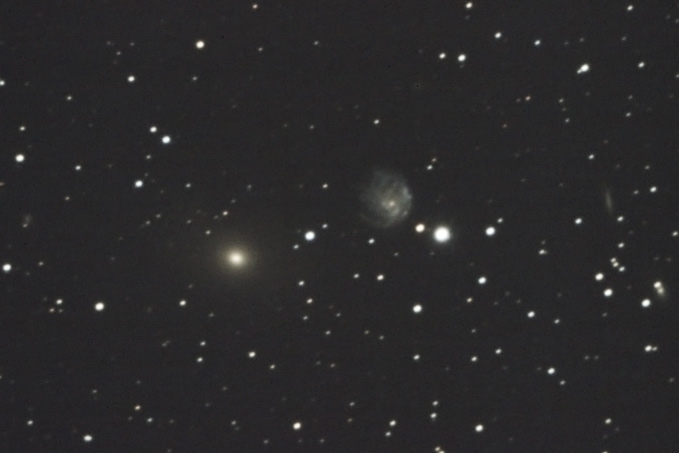| NGC2276 / Galaxy, type SAB(rs)c |
|---|
| R.A. | 07h 27m 16.7s (2000.0) |
|---|
| Dec. | +85°45' 20" (2000.0) |
|---|
| Apparent Size | 2.8×2.6' |
|---|
| Radial Velocity | +2372km/s |
|---|
| Magnitude | 11.9 |
|---|
| Distance | 100 million light yrs. |
|---|
| Group of Galaxies | - |
|---|
| Other IDs | UGC 3740, CGCG 362-42
CGCG 363-27, Arp 25
MCG +14-4-28, IRAS 7101+8550
PGC 21039 |
|---|
|
| NGC2300 / Galaxy, type SA0° |
|---|
| R.A. | 07h 32m 21.5s (2000.0) |
|---|
| Dec. | +85°42' 33" (2000.0) |
|---|
| Apparent Size | 2.0×2.0' |
|---|
| Radial Velocity | +1963km/s |
|---|
| Magnitude | 12.1 |
|---|
| Distance | 100 million light yrs. |
|---|
| Group of Galaxies | - |
|---|
| Other IDs | UGC 3798, CGCG 362-43
CGCG 363-29, Arp 114
MCG +14-4-31, PGC 21231 |
|---|
|

